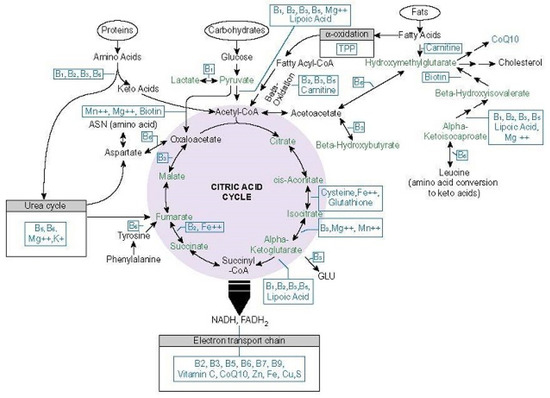Mito
Member
- Joined
- Dec 10, 2016
- Messages
- 2,554
Abstract
Thiamine or vitamin B1 is an essential, water-soluble vitamin required for mitochondrial energetics—the production of adenosine triphosphate (ATP). It is a critical and rate-limiting cofactor to multiple enzymes involved in this process, including those at the entry points and at critical junctures for the glucose, fatty acid, and amino acid pathways. It has a very short half-life, limited storage capacity, and is susceptible to degradation and depletion by a number of products that epitomize modern life, including environmental and pharmaceutical chemicals. The RDA for thiamine is 1.1–1.2 mg for adult females and males, respectively. With an average diet, even a poor one, it is not difficult to meet that daily requirement, and yet, measurable thiamine deficiency has been observed across multiple patient populations with incidence rates ranging from 20% to over 90% depending upon the study. This suggests that the RDA requirement may be insufficient to meet the demands of modern living. Inasmuch as thiamine deficiency syndromes pose great risk of chronic morbidity, and if left untreated, mortality, a more comprehensive understanding thiamine chemistry, relative to energy production, modern living, and disease, may prove useful.
Hiding in Plain Sight: Modern Thiamine Deficiency
Thiamine or vitamin B1 is an essential, water-soluble vitamin required for mitochondrial energetics—the production of adenosine triphosphate (ATP). It is a critical and rate-limiting cofactor to multiple enzymes involved in this process, including those at the entry points and at critical...
